I received an inbox question on and it goes thus: “Good day gentle man, I’m an engineer by profession and a faithful member of the Redeemed Christian Church of God. I’m about getting married to a strong catholic lady but she has refused to join my church. Well, I told her I will only join the catholic church if and only if she explains to me the catholic practices, and all She could do is to ask me to join this catholic group. Let me begin with the most difficult question for me to believe. Please show me where in the Bible I can see the “Hail Mary and Mother of God prayer”, I think you people call it the rosary…? I have searched my bible over and over but i can’t find it. I still have other pending questions…
Thanks in anticipation”
Bearing in mind the complexity of this topic, we shall base our discussion under three headings:
*What is the Holy Rosary?
*Brief historical development
*Scriptural Foundation (Yes, the Rosary is in the Bible)
The Rosary is the summary work of man’s redemption, it is a means that has reinstated man to his original state (St. Louis Maria de Montfort).
seeing the rosary as the summary work of man’s redemption, many scholars/theologians have directly or indirectly conceived the rosary as the whole lot of what it entails for man to be saved; which is chiefly about the Scriptural reality.
The Rosary is composed of MENTAL and VOCAL prayers. The mental aspect involves meditating and contemplating on the life, passion, death, and Glory of Jesus and Mary; while the vocal prayer entails reciting the “Our Father” (the Lord’s prayer) and the “Hail Mary” (Angelic Salutation) while at the same time meditating on the chief mysteries of our salvation.
BRIEF HISTORICAL DEVELOPMENT
The Rosary as we have it in this presnt form can be traced to the “blessed father”, St. Dominic, the founder of the Order of Preachers. Further research has proven that the Rosary was in existence prior to the days of St. Dominic. In those earlier days, its existence was patterned on the Book of Psalms. Originally, possibly as far back as the eight century, the Lord’s Prayer was recited 150 times by religious communities. Those who were devoted to the Blessed Virgin Mary replaced the Lord’s Prayer with the first part of today’s Hail Mary, reciting 150 Hail Mary’s on beads strung on a cord.
During the fifteen century, the Rosary was divided into three Chaplets of 50 Hail Marys each, at which time five mysteries were added to each Chaplet. By the sixteen century, the fifteen mysteries had become accepted by all as the proper way of reciting the Rosary. During that period of time, the second half of the Hail Mary was added and the “Glory be to the Father” was used to close each decade of the Rosary. In 1569, Pope Pius V officially approved the Rosary as it was known throughout the world.
On October 16, 2002, Pope John Paul II marked the 24th Anniversary of his papacy with the release of the Apostolic Letter Rosarium Virginis Mariae, in which he proclaimed a “Year of the Rosary” from October 2002 to October 2003. He announced that he would add five new mysteries to the Rosary.
Pope John Paul II introduced the Luminous Mysteries, or Mysteries of Light, to the Catholic Rosary. All together, we have the 20 decades of the Rosary
SCRIPTURAL FOUNDATION OF THE HOLY ROSARY
The word “Rosary” is not literally fiund in the scriptures, but it can be viewed primarily as the summary of the New Testament.
The “Our Father”– part of the Rosary–is literally biblical (The Lord’s Prayer: Matt. 6:5-13)
The first part of the “Hail Mary” corresponds to the Angel’s salutation at the Annunciation and that of Elisabeth at the Visitation (Lk 1:28 and 2:42 respectively). The second half, “Holy Mary, Mother of God, pray for us sinners, now and at the hour of our death,” might be understood as follows:
“Holy Mary” again corresponds to the biblical passage of the Annunciation (Lk 1:28: “full of grace”) “Mother of God” is the very meaning of the biblical annunciation even if the term as such was approved at Ephesus (431).
Luke 1:43 “And how does this happen to me, that the Mother of my Lord (Blessed Virgin Mary) should come to me?”
“Pray for us”: the intercession can be related to the Wedding Feast at Cana where Mary intercedes with her Son for the young couple in trouble. (John 2:5 “His mother said to the servers, “Do whatever he tells you.)
“Now and at the hour of our death”: can be related to Mary’s station at the foot of the Cross as refuge of hope.
Finally, the “Glory be to the Father” makes direct reference to the Trinity; Father, Son and Spirit and the praise due to them.
Most Catholics pray a 5-decade Rosary, and there is a traditional “rotation schedule” to help you choose which set of mysteries to meditate upon on a given day:
Monday: Joyful Mysteries
Tuesday: Sorrowful Mysteries
Wednesday: Glorious Mysteries
Thursday: Luminous Mysteries
Friday: Sorrowful Mysteries
Saturday: Joyful Mysteries
Sunday: Glorious Mysteries
The mysteries are usually listed in a timeline order. I‘ve included the virtues, or fruits along with the Biblical references that describe each event:
Joyful Mysteries:
1. The Annunciation (Humility) Luke 1: 26-38; John 1:14
2. The Visitation (Charity/Love of Neighbor) Luke 1: 39-56
3. The Nativity (Poverty) Luke 2: 6-20; Matthew 1:18-25
4. The Presentation (Obedience) Luke 2: 22-39
5. The Finding of the Child Jesus in the Temple (Joy in finding Jesus; prudence) Luke 2: 41-51
Luminous Mysteries:
1. The Baptism of Jesus (Fidelity to our baptismal promises) Matthew 3:11-17; Luke 3:15-22; John 1:22-34
2. The Wedding Feast at Cana (Faith in Mary‘s intercession and maternal care)
John 2: 1-12
3. The Proclamation of the Kingdom (Conversion of heart) Mark 1:14-15; Matthew 5:1-8; Matthew 6:33; Matthew 7:21
4. The Transfiguration (Become a new person in Christ) Luke 9:28-36; Matthew 17:1-8
5. The Institution of the Eucharist (Love of the Eucharist; active participation at Mass); Matthew 26:26-28; John 6: 33-59
*Note: The five Luminous Mysteries, or Mysteries of Light, were introduced in 2002 by Pope John Paul II in Rosary of the Virgin Mary.
Sorrowful Mysteries:
1. The Agony in the Garden (True sorrow for sin; repentance) Matthew 26: 36-46;
Mark 14:32-42; Luke 22: 39-46
2. The Scourging at the Pillar (Modesty and purity; mortification or self-denial) Matthew 27:26; Mark 15:15; John 19:1
3. The Crowning of Thorns (Moral courage; love of our enemies) Matthew 27:29-30;
Mark 15:16-20; John 1: 2-3
4. The Carrying of the Cross (Patience, especially when suffering; fortitude)
Luke 23: 26-32; Matthew 27:31-32; Mark 15:21; Luke 23: 26-32
5. The Crucifixion (Perseverance; mercy) Luke 23: 33-46; Matthew 27: 33-54;
Mark 15: 22-39; Luke 23: 33-47; John 19: 17-37
Glorious Mysteries:
1. The Resurrection (Faith) Matthew 28: 1-10; Mark 16: 1-18; Luke 24: 1-49;
John 20:1-29
2. The Ascension (Hope) Mark: 16: 19-20; Luke 24: 50-51; Acts 1: 6-11
3. The Descent of the Holy Spirit (Love of God; gifts of the Holy Spirit)
Acts 2: 1-41
4. The Assumption* (Grace of a happy death; eternal happiness)
Revelation 12:1
5. Crowning of Mary as Queen of Heaven and Earth* (True devotion to Mary)
Revelation 12:1
* Mary‘s Assumption and Coronation are implied in Revelation Chapter 12 and in other Biblical references, but neither is directly stated in the Bible. Both events are part of Catholic Tradition. The Catechism of the Catholic Church defines the Assumption in Sections 966 and 974.
I hope this analysis answers the question…
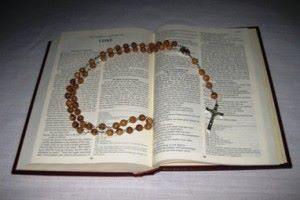
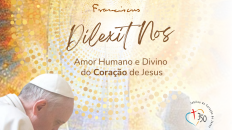
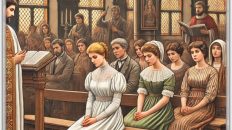
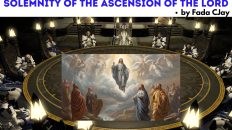
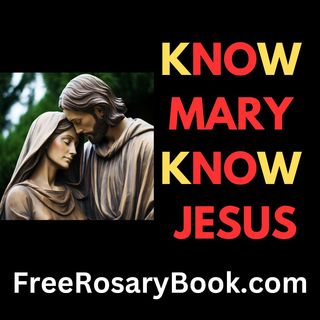
Hi I am a catholic , but i have some questions about baptism.
As I read on the baptism of Jesus John 1:22-34. Why there were no infants baptized but in catholic church we baptized enfants.
infants baptism remove sin from mother womb while the adult baptism remove sins of the world and brings to be Jesus children